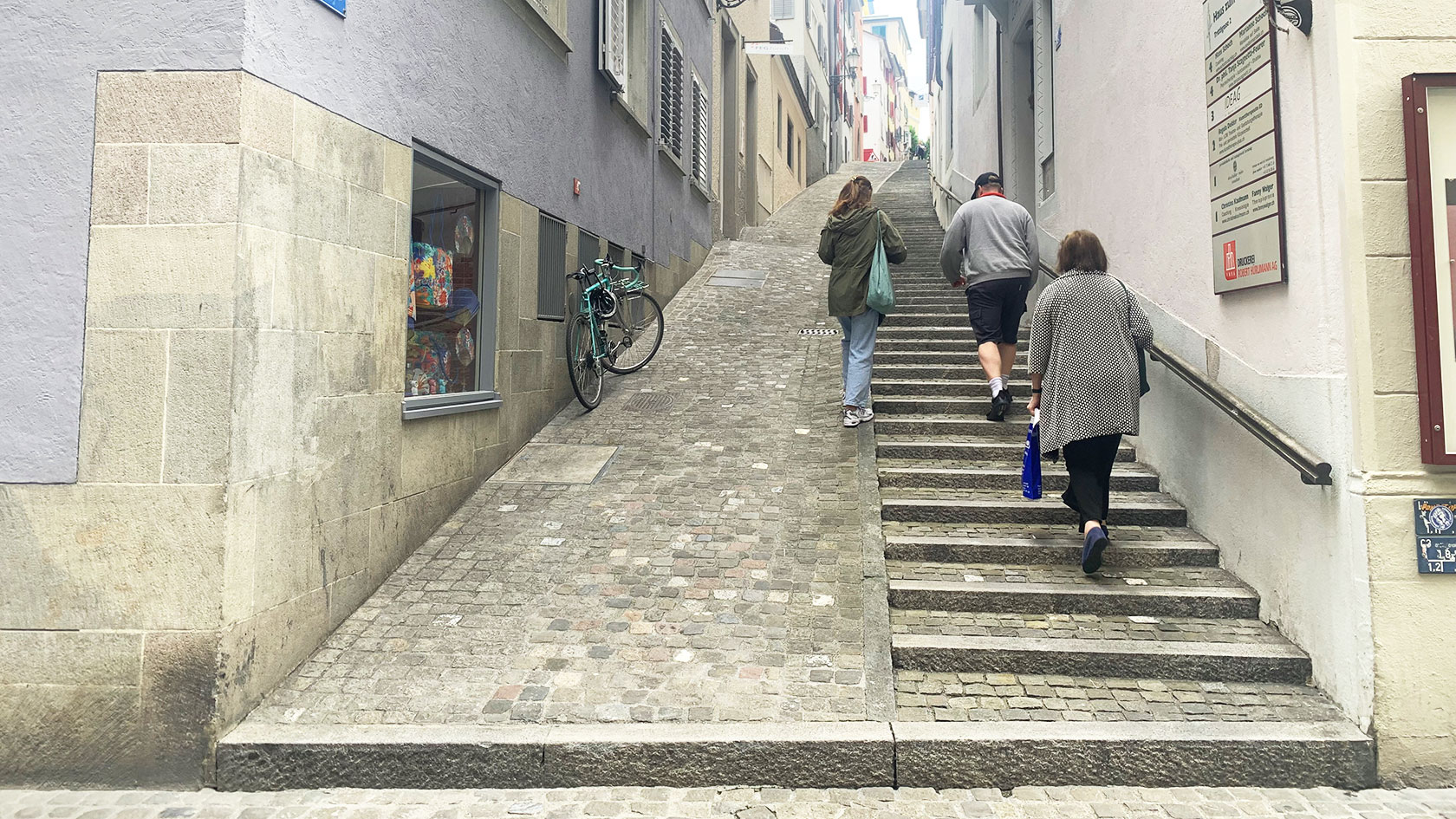Accessible Zurich
Getting around Zurich can be difficult for people with impaired mobility. Stairs, missing ramps, narrow sidewalks and high curbs as well as paths blocked by constructions sites or parked cars present considerable obstacles if you’re in a wheelchair, pushing a buggy or not as mobile as you used to be. Apps like Google Maps often don’t offer much help, as they lack detailed information about sidewalk accessibility.
ZüriACT, a project led by the Digital Society Initiative (DSI), the Department of Geography at the University of Zurich and the city of Zurich, now aims to tackle this problem. The project aims to collect accessibility data on sidewalks in Zurich and make this information available to the general public. “We want to help make Zurich more accessible and inclusive,” says Hoda Allahbakhshi, who heads up the ZüriACT (Zurich Accessible CiTy) project.
Getting people involved
To succeed, the project needs to involve those affected by limited mobility. “We want to investigate their needs and gain their perspective. ZüriACT is a citizen science project that has been designed with the people and for the people,” says the project manager, who researches at the DSI. Some people have already got involved and started collecting data on how accessible the target group perceives Zurich’s sidewalks to be. They used street view pictures to label obstacles and rate their severity on the website of Project Sidewalk. This allowed them to report cracks in the sidewalk as surface problems, for example, and include an assessment of the obstacle’s severity as well as an optional description.
Digital map of the city
Using these data, the goal is to create the basis for a digital map of Zurich that contains detailed information on sidewalk accessibility. “This will enable people with limited mobility to prepare for or even avoid obstacles in their paths,” says Allahbakhshi. The plan is to add data from the Project Sidewalk website to the city of Zurich’s current accessibility information. These combined data will form the basis for the prototype of a personalized app that offers navigation functions similar to Google Maps.
ZüriACT is still in its infancy and so far only covers areas in the very center of Zurich. In the long term, however, the aim is to expand the project to other neighborhoods and possibly further Swiss cities, provided the post-project evaluation in May 2024 is positive.
Raising awareness
Hoda Allahbakhshi is currently looking for additional people to participate in the study. “The project won’t survive without the support of the people.” As part of the Science and the City warm-up events in the week before Scientifica, she and her team are presenting ZüriACT to members of the public on a guided walk around the city center (see box). “We hope to raise awareness for accessibility issues and find new participants for our project to create an accessible and inclusive city.”
